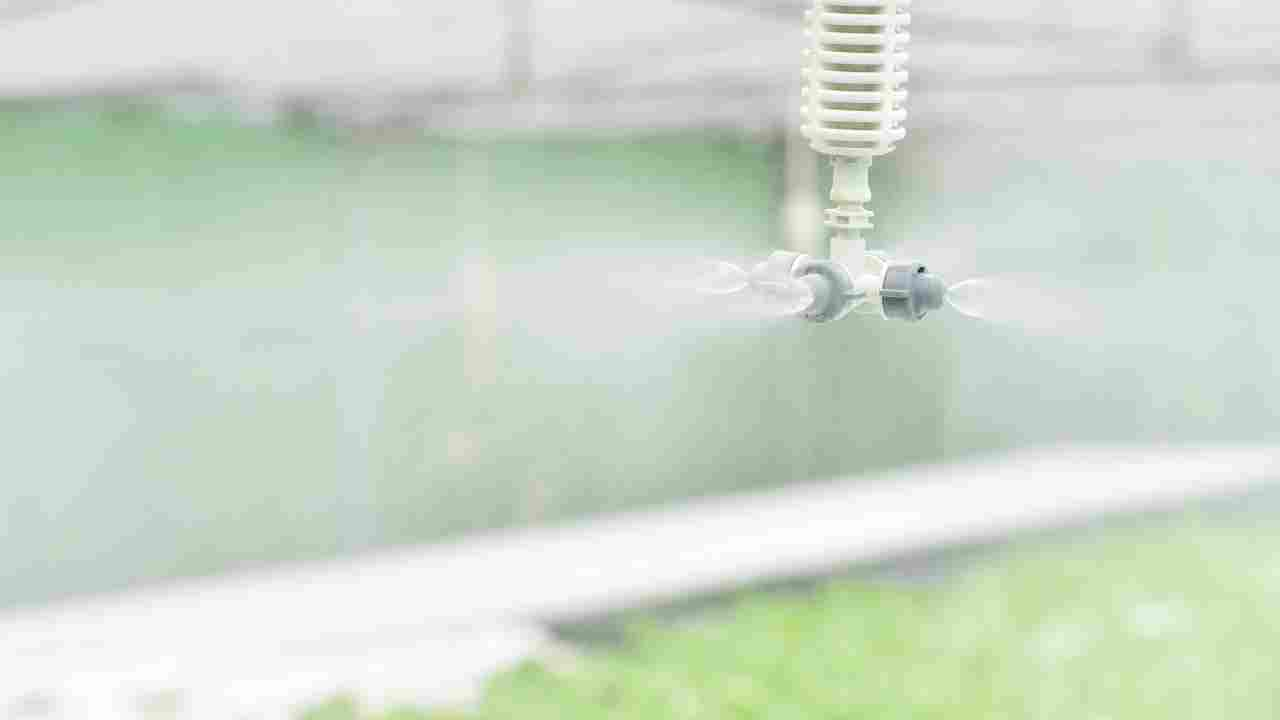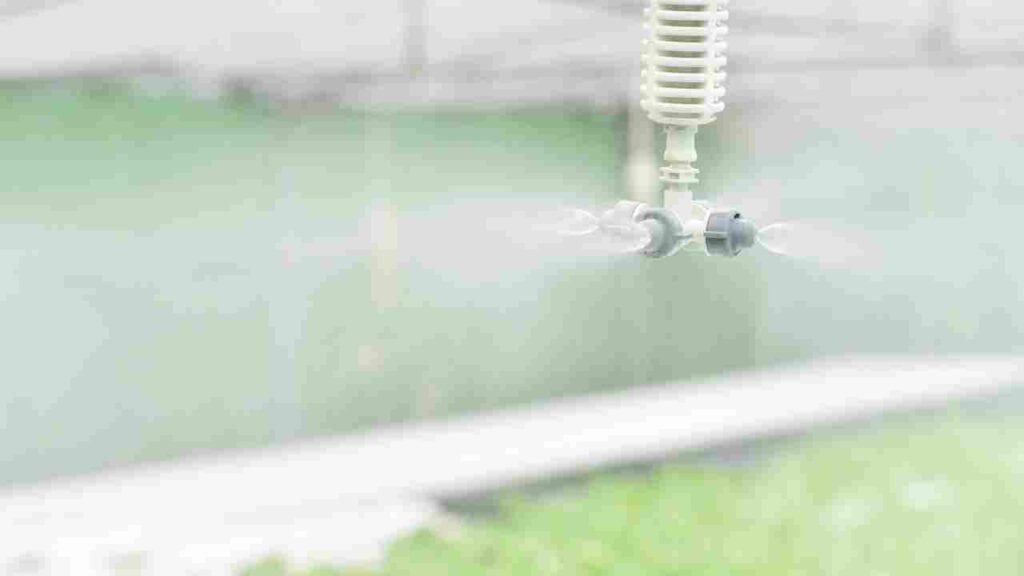Does Hydroponics Need Running Water?


Hey there, fellow gardening enthusiasts! Today, we’re diving deep into hydroponics, a soil-less cultivation method that has taken the plant-loving community by storm.
Let’s address the million-dollar question: Does hydroponics require running water? We’re about to uncover the truth behind this intriguing topic and explore the fascinating relationship between hydroponics and water.
So, fasten your gardening gloves and prepare for an insightful journey into water-dependent plant growth, where innovation and horticulture intertwine remarkably.
The Role of Water in Hydroponics:
Water plays a fundamental role in hydroponics, serving as the lifeblood of this innovative gardening method. In hydroponic systems, where plants are grown without soil, water takes on multiple essential functions that contribute to the plant’s overall health and growth. So, let’s dive in and explore water’s critical role in hydroponics.
First and foremost, water acts as a carrier, delivering vital nutrients directly to the plant’s root system. Unlike traditional soil-based gardening, where plants obtain nutrients from the surrounding soil, hydroponics relies on nutrient-rich water solutions. This means that water gives plants the necessary elements for growth, ensuring they receive a balanced diet to thrive.
But water doesn’t stop at nutrient delivery. It also plays a crucial role in oxygenation and hydration. In hydroponic systems, plant roots are exposed to the water solution, allowing them to absorb nutrients and oxygen dissolved in the water.
This oxygen supply is vital for facilitating healthy respiration and ensuring that plants can efficiently convert nutrients into energy.
Moreover, water is responsible for keeping plants properly hydrated. Like traditional gardening, plants require adequate water to grow and develop. In hydroponics, where there is no soil to retain moisture, it’s crucial to maintain a consistent water supply to prevent dehydration and ensure plants have access to the hydration they need.
To ensure successful hydroponic cultivation, water quality is of utmost importance. Contaminants or imbalances in the water can harm plants and impede their growth.
It’s essential to use clean and pure water, free from chemicals and pollutants, to prevent any adverse effects on plant health. Water filtration and treatment methods can be employed to maintain a suitable water supply for hydroponic systems.
Additionally, factors like plant species, growth stage, and environmental conditions influence the water requirements in hydroponics. Monitoring water levels, adjusting nutrient solutions, and ensuring optimal pH and electrical conductivity (EC) levels are crucial for providing the ideal growing conditions for plants.
Water conservation is also a significant consideration in hydroponics. Implementing water recycling and reusing strategies can help reduce water usage and promote sustainability in hydroponic operations. By adopting these practices, growers can minimize water waste and contribute to environmental preservation.
Hydroponic Systems that Require Running Water:
While hydroponics offers versatility in water management, certain hydroponic systems rely on a continuous supply of running water. These systems have unique mechanisms that require a consistent water flow to provide optimal conditions for plant growth. Let’s explore some of these hydroponic systems that depend on running water.
One such system is the Nutrient Film Technique (NFT). In NFT, a thin film of water continuously flows over the roots, delivering nutrients while maintaining oxygenation.
This gentle water flow provides a nutrient-rich environment for the plants to thrive. To maintain this system, a constant supply of running water is necessary to ensure the smooth circulation of the nutrient solution.
Another hydroponic system that requires running water is the Aeroponics system. In Aeroponics, plant roots are suspended in the air, and nutrient-rich water is sprayed or misted directly onto the roots.
This misting process provides optimal hydration and nutrient uptake. To achieve this, a high-pressure pump generates a fine mist, making a running water source essential for the system’s functionality.
The Ebb and Flow, or Flood and Drain, system is another hydroponic setup that relies on running water. In this system, the plant’s roots are periodically flooded with nutrient-rich water, and the excess water is drained away.
A pump connected to a timer controls the water flow, allowing the plants to absorb the necessary nutrients. This cycling process requires a running water source to facilitate the periodic flooding and draining of the system.
It’s important to note that these systems have their advantages, such as efficient nutrient delivery and oxygenation, but they do come with the requirement of a consistent running water supply. When opting for these systems, it’s essential to consider factors like water availability, infrastructure, and maintenance.
While running water may be necessary for certain hydroponic systems, it’s crucial to explore alternative methods for water management if access to a continuous water source is limited. Many hydroponic systems offer flexibility and can adapt to different water availability scenarios.
Hydroponic Systems that Do Not Require Running Water:
If you don’t have easy access to a running water source, don’t worry! Hydroponics still offers plenty of options that don’t rely on a continuous water flow. These water-independent systems provide flexibility and can be a great choice for conserving water or working with limited resources.
Let’s explore some hydroponic systems that don’t require running water.
1. Deep Water Culture (DWC) System:
The DWC system is one of the simplest and most popular hydroponic systems that doesn’t need running water. This system submerges plant roots in a nutrient-rich water solution within a reservoir.
An air pump provides oxygen to the roots, allowing them to thrive. You can successfully grow plants in a DWC system without running water with a properly balanced nutrient solution and regular monitoring.
2. Wick System:
The Wick system is another water-efficient hydroponic method that doesn’t rely on a continuous water supply. It operates on a passive wicking mechanism, where a wick, such as a cotton rope, draws nutrient solution from a reservoir and transports it to the plant roots.
The capillary action of the wick ensures a slow and steady delivery of water and nutrients to the plants. This system is relatively low-maintenance and can be suitable for small-scale hydroponic setups.
3. Drip Irrigation System:
While the traditional concept of a drip irrigation system involves running water, it can be modified for water conservation. In this system, a timer-controlled pump intermittently delivers a nutrient solution to the plants via drip emitters.
By adjusting the timing and frequency of the irrigation cycles, you can minimize water usage while still providing plants with the necessary nutrients. This modified drip irrigation system balances water conservation and hydroponic efficiency.
4. Passive Hydroponic Systems:
Passive hydroponic systems, such as the Kratky method, are designed to work without electricity or running water. These systems rely on a static water reservoir where plants’ roots are partially submerged.
As the plants absorb the nutrient solution, the water level gradually decreases. This method takes advantage of the plant’s natural ability to draw up water as needed, eliminating the need for running water or complex irrigation systems.
Factors to Consider for Water Management in Hydroponics:
Water management is a crucial aspect of hydroponics, as it directly impacts plant health, nutrient delivery, and overall system efficiency. To ensure successful hydroponic cultivation, several factors related to water management need to be considered. Let’s explore these factors in detail:
1. Water Quality:
Water quality plays a vital role in hydroponics. Using clean, filtered water free from contaminants, pathogens, and excessive minerals is essential. Poor water quality can lead to nutrient imbalances, clogged irrigation systems, and hindered plant growth.
Regular testing and monitoring of water quality parameters, such as pH levels, electrical conductivity (EC), and nutrient content, are crucial for maintaining optimal water quality.
2. pH Balance:
Maintaining the correct pH level is vital for proper nutrient uptake in hydroponics. Different plant species have varying pH preferences, but generally, a pH range of 5.5 to 6.5 is suitable for most hydroponic crops.
Deviations from the optimal pH range can hinder nutrient availability and lead to nutrient deficiencies or toxicities. Regular pH monitoring and adjustment using pH buffers or acids/bases are necessary to ensure a balanced pH environment for plants.
3. Nutrient Solution Management:
The nutrient solution is a critical hydroponics component, delivering essential minerals to the plants. Monitoring and managing the nutrient solution’s composition, including nutrient concentration, balance, and composition, are vital for healthy plant growth.
Regular testing and adjustment of the nutrient solution based on plant needs and growth stages help maintain optimal nutrient uptake and avoid nutrient imbalances.
4. Watering Schedule and Frequency:
Hydroponics must establish a proper watering schedule and frequency. It depends on various factors, including plant species, growth stage, environmental conditions, and system design.
Overwatering can lead to oxygen deprivation and root rot, while underwatering can result in nutrient deficiencies and stunted growth. Monitoring the moisture levels in the root zone and adjusting the watering schedule accordingly is crucial for maintaining proper water balance.
5. Watering Method and Efficiency:
Choosing the right watering method can optimize hydroponics’ water usage and nutrient delivery. Techniques such as drip irrigation, ebb, flow, or nutrient film technique (NFT) offer efficient water distribution to the plants’ root zones. Ensuring proper system design, including appropriate irrigation equipment and timers, helps prevent water wastage and provides effective water management.
6. Evaporation and Transpiration:
Evaporation and transpiration processes contribute to water loss in hydroponics. Factors such as temperature, humidity, and air circulation influence the rate of evaporation and transpiration. Environmental control, including temperature regulation, humidity management, and adequate air movement, can minimize water loss and maintain optimal growing conditions.
7. Water Conservation:
Promoting water conservation practices is crucial for sustainable hydroponic systems. Implementing water recycling, reusing, and capturing runoff can significantly reduce water consumption. Collecting and treating rainwater and using water-efficient technologies like smart sensors and automated irrigation systems further enhance water conservation efforts.
Conclusion:
In conclusion, water management is a vital aspect of successful hydroponic cultivation. Growers can optimize plant health, nutrient uptake, and system efficiency by considering factors such as water quality, pH balance, nutrient solution management, watering schedule, and efficiency, as well as implementing water conservation practices.
Monitoring and adjusting these factors based on plant needs and growth stages are key to maintaining a balanced water environment in hydroponics. Proper water management ensures optimal nutrient delivery, healthy plant growth, and sustainable hydroponic practices.
So, dive into the world of hydroponics with this knowledge and watch your plants thrive in a soil-less, water-efficient oasis.
